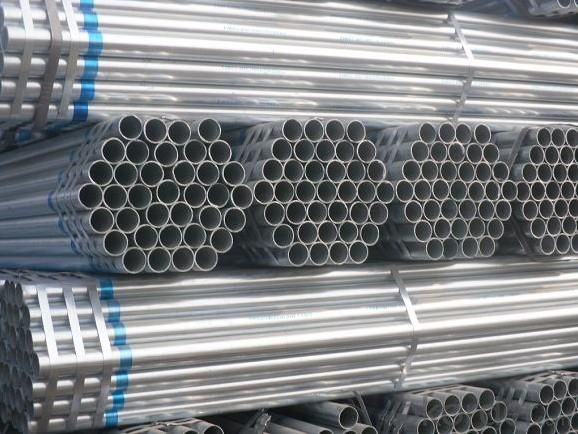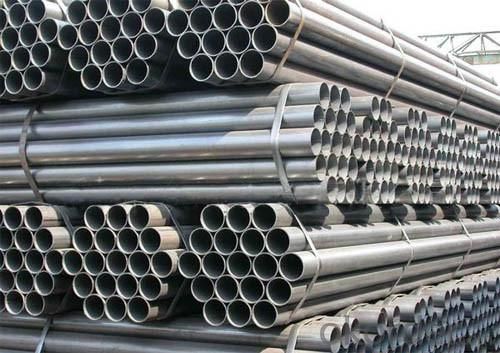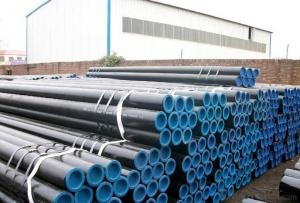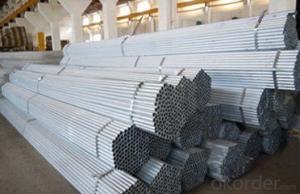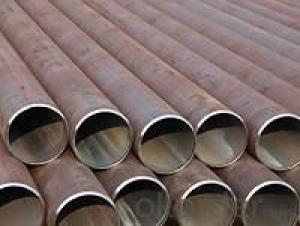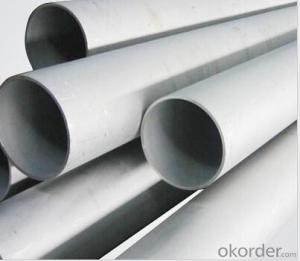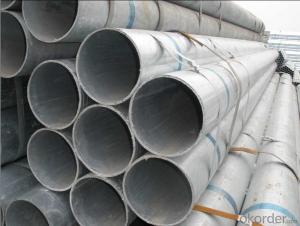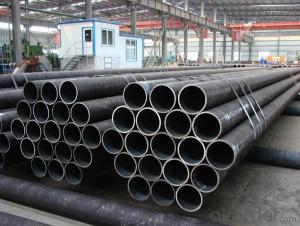Galvanized Oiled Painted Bare Welded Scaffolding Building Structure Pipe ASTM A53,GB/T3091,BS1387
- Loading Port:
- Tianjin; Qingdao Port
- Payment Terms:
- TT or LC
- Min Order Qty:
- 50MT m.t.
- Supply Capability:
- 5000 Tons Per Month m.t./month
OKorder Service Pledge
OKorder Financial Service
You Might Also Like
1.Specification of Scaffolding Building Structure Pipe
1)Application: For low pressure liquid delivery such as water, gas and oil; For construction, e building greenhouse. Structure,Machinery,Airport,Railway,Building, Construction ect.
2)Standard: BS1139, EN39, EN10219, GB/T13793, JIS G3444, ASTM A53,GB/T3091,BS1387
3)Other Material: Q195,Q215,Q235,Q345
4)Surface Treatment: galvanized , oiled, painted , bare
5)End Treatment: beveled , plain , threaded
5)Test: Chemical Component Analysis, Mechanical Properties (Ultimate tensile strength, Yield strength, Elongation), Technical Properties (Flattening Test, Bending Test, Blow Test, Impact Test), Exterior Size Inspection, Hydrostatic Test, X-ray Test.
7)Application: fence, construction.
8)Certificate: SGS, BV, Lloyds etc.
2.Size of Product
Outer Diameter: 27mm, 38mm, 42mm, 48.3-48.6mm
Thickness: 2.5mm, 2.75mm, 3.0mm, 3.25mm, 3.5mm, 3.75mm, 4.0mm
Length: 5.8m, 6.0m, 6.4m, 6.5m,0.3-18m3.
3.Packing&Delivery
Packing Detail: Big OD: in bulk; Small OD: packed by steel strips; Water-proof cloth ; According to Customer's requirement
Delivery Time: Usually in 20-30 days after receving the deposit or the LC
4. Data Sheet
Chemical Composition of Raw Materials | Mechanical Property of Raw Materials | ||||||||||
Item | Chemical Composition % | Item | Mechanical Property | ||||||||
Steel | Steel No. | C | Mn | S | P | Si | Al | Steel | Yield Point Mpa min | Tensile Strength Mpa | Elongat on % min |
S235GT | 1.0106 | < 0.20 | < 1.40 | < 0.045 | < 0.040 | < 0.05 | > 0.020 | S235GT | 235 | 340--520 | 24 |
5. Standard Size for Reference
OD (mm) | WT (mm) | L (mm) | Tolerance (min) mm | Zinc Coating g/m2 |
48 -- 48.6 | 2--7 | 300 -- 6000 | WT +/- 0.2 , L - 0 -- + 3 | 280--400 |
other size also can be manufactured, please contact us for detail information. | ||||
6. Products Showroom

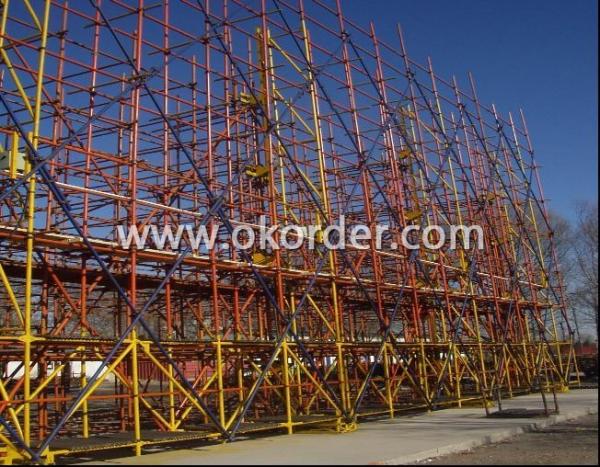
- Q: Can steel pipes be used for wastewater disposal?
- Yes, steel pipes can be used for wastewater disposal. Steel pipes are commonly used in wastewater systems due to their durability, strength, and resistance to corrosion. They can handle the high pressure and flow rates often associated with wastewater and can effectively transport it to treatment plants or other disposal points. Additionally, steel pipes can be coated or lined with materials that provide extra protection against corrosion or chemical reactions with the wastewater, further increasing their longevity and effectiveness in wastewater disposal.
- Q: Can steel pipes be used for geothermal energy systems?
- Yes, steel pipes can be used for geothermal energy systems. Steel pipes are commonly used in geothermal energy systems due to their strength, durability, and resistance to high temperatures and corrosion. They are able to withstand the harsh underground conditions and are suitable for transporting the geothermal fluid from the heat source to the surface for energy extraction.
- Q: How are steel pipes used in LNG terminals?
- Steel pipes are used in LNG terminals for various purposes, including the transportation and storage of liquefied natural gas. These pipes are responsible for conveying the LNG from the storage tanks to the regasification units, where it is converted back into its gaseous state for distribution. Steel pipes are preferred for this application due to their strength, durability, and ability to withstand extreme temperatures and pressures. Additionally, these pipes are used for the safe transfer of other fluids and gases within the LNG terminal infrastructure.
- Q: How do steel pipes handle vibrations?
- Steel pipes are known for their ability to handle vibrations effectively. Due to their strong and rigid nature, steel pipes can withstand various types of vibrations, including mechanical vibrations and seismic activities. The resilience of steel pipes is attributed to their structural integrity and strength. Steel pipes have high tensile strength, which enables them to resist deformation or breakage when subjected to vibrations. They are also resistant to fatigue, meaning they can endure repeated vibrations without experiencing any significant damage. This makes steel pipes ideal for applications that involve constant or cyclic vibrations, such as in industrial settings or for transportation of fluids through pipelines. Moreover, steel pipes have the advantage of being able to dampen vibrations due to their mass. The weight of the steel pipe helps absorb and dissipate the energy produced by vibrations, preventing excessive movement or oscillation. This damping effect contributes to the overall stability and durability of the pipe system. To further enhance the ability of steel pipes to handle vibrations, various measures can be taken. These may include the use of vibration isolators or dampers, which are devices designed to reduce the transmission of vibrations from the surrounding environment. Additionally, proper installation techniques and regular maintenance can help ensure that steel pipes continue to perform optimally under vibration-prone conditions. In summary, steel pipes are well-suited to handle vibrations due to their strength, resistance to fatigue, and ability to dampen vibrations. Their robustness and durability make them a reliable choice for applications where vibrations are a concern, ensuring the safe and efficient transport of fluids or materials.
- Q: How are steel pipes protected against UV radiation?
- Steel pipes are typically protected against UV radiation through the application of coatings or paints that contain UV inhibitors. These coatings act as a barrier between the steel surface and the harmful UV rays, preventing damage and degradation of the pipes over time. Additionally, some steel pipes may be treated with zinc or other metals, which offer inherent UV protection and enhance the overall durability of the pipes.
- Q: How are steel pipes used in the telecommunications industry?
- Steel pipes are commonly used in the telecommunications industry for the installation of underground and overhead cables. These pipes provide a protective casing for the cables, ensuring their safety from external elements and physical damage. Additionally, steel pipes are used in the construction of telecommunication towers and infrastructure, providing support and stability for antennas, satellite dishes, and other communication equipment.
- Q: What are the different types of pipe fittings used with steel pipes?
- There are several types of pipe fittings commonly used with steel pipes, including elbows, tees, reducers, flanges, couplings, and unions.
- Q: What are the different types of steel pipe bends?
- There are several types of steel pipe bends, including long radius bends, short radius bends, and induction bends. Long radius bends have a larger radius and are used when a gentle bend is required. Short radius bends have a smaller radius and are used when a more abrupt bend is needed. Induction bends are created using a heating process to achieve specific bend angles and radii.
- Q: Can steel pipes be used for conveying solid materials?
- Yes, steel pipes can be used for conveying solid materials. Steel pipes are known for their durability and strength, making them suitable for transporting various solid materials such as ores, grains, coal, and construction materials. The smooth interior of steel pipes allows for efficient flow and minimal friction, making them a preferred choice in industries like mining, agriculture, and construction.
- Q: Are steel pipes resistant to chemicals and corrosion?
- Generally speaking, steel pipes possess a high resistance to chemicals and corrosion. To further enhance this resistance, protective layers such as zinc or epoxy are often applied to steel pipes. These coatings serve as a barrier, preventing direct contact between chemicals and the steel, thus reducing the risk of corrosion. Moreover, steel itself possesses inherent corrosion-resistant properties, making it a suitable material for applications where exposure to chemicals and corrosive elements is common. However, it is worth noting that the level of resistance may vary depending on the specific type of steel, the chosen coating, and the particular chemicals or corrosive substances involved. Therefore, it is advisable to seek advice from experts and carefully consider the specific requirements of the intended application to ensure the appropriate selection of steel and protective measures, thereby maximizing resistance to chemicals and corrosion.
1. Manufacturer Overview
| Location | Hebei,China |
| Year Established | 2005 |
| Annual Output Value | Above 100 Million RMB |
| Main Markets | Main land;Middle East;Southeast Asia |
| Company Certifications | ISO9001 |
2. Manufacturer Certificates
| a) Certification Name | |
| Range | |
| Reference | |
| Validity Period |
3. Manufacturer Capability
| a) Trade Capacity | |
| Nearest Port | Tianjin;Qingdao |
| Export Percentage | 41% - 50% |
| No.of Employees in Trade Department | |
| Language Spoken: | English;Chinese;Korean |
| b) Factory Information | |
| Factory Size: | 120mu |
| No. of Production Lines | 11 |
| Contract Manufacturing | OEM Service Offered;Design Service Offered |
| Product Price Range | High Average |
Send your message to us
Galvanized Oiled Painted Bare Welded Scaffolding Building Structure Pipe ASTM A53,GB/T3091,BS1387
- Loading Port:
- Tianjin; Qingdao Port
- Payment Terms:
- TT or LC
- Min Order Qty:
- 50MT m.t.
- Supply Capability:
- 5000 Tons Per Month m.t./month
OKorder Service Pledge
OKorder Financial Service
Similar products
Hot products
Hot Searches
Related keywords




